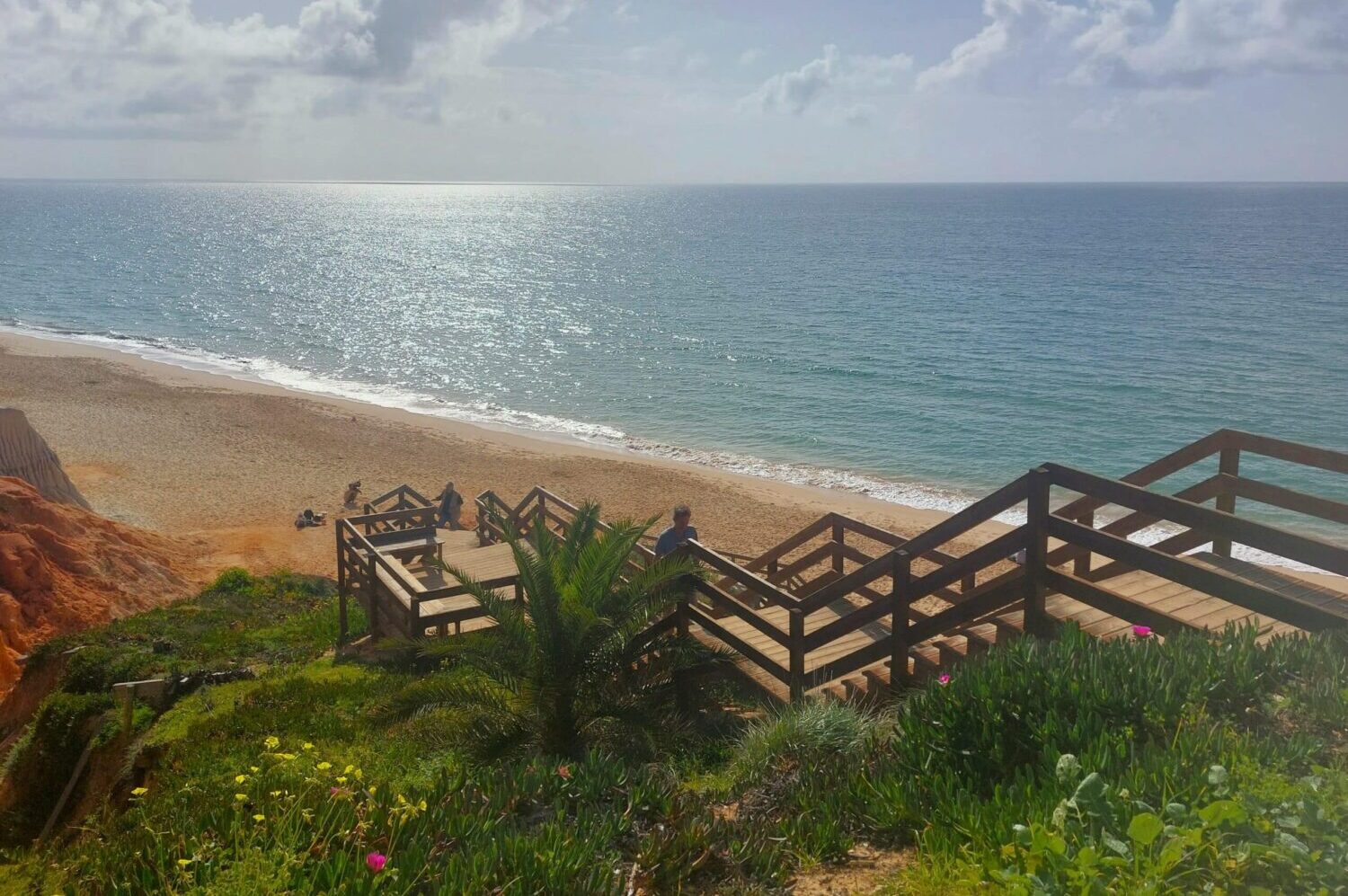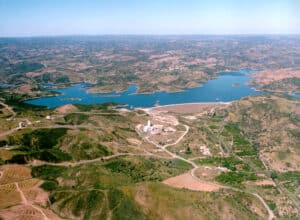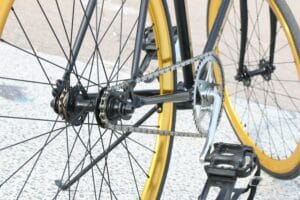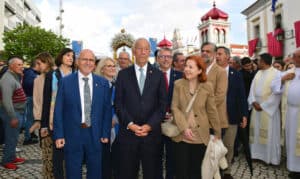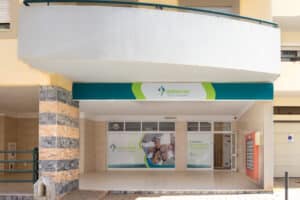Águas do Algarve launches €90 million tender for desalination plant in Albufeira
In spite of public protest, the government is sticking to its guns, insisting a €90 million desalination plant sited on private land in Albufeira is one of the answers to the region’s chronic lack of fresh water.
Friday saw the publication in State gazette Diário da República of a public tender for the construction of the plant – launched by water collection, treatment and supply company Águas do Algarve – for almost double the price initially touted.
In the early days, Águas do Algarve talked about the project costing “around €50 million”. That figure is now €90 million – the funding of which is to be covered by recovery and resilience funding (RRP) from Brussels.
The plan envisages an initial capacity for conversion of seawater into drinking/irrigation water of 16 cubic hectometres (meaning 16 million cubic metres).
In a statement, Águas do Algarve said the project – due for completion by the end of 2026 – will be prepared to increase capacity to 24 cubic hectometres per year.
Lusa explains that 2026 is the deadline for using funds from the RRP, the support programme created by the EU to revitalise Member States’ economies after the Covid-19 pandemic.
“This structural project for the region aims to guarantee the resilience of public supply to the population of the Algarve, particularly in periods of prolonged drought, by increasing water availability,” said Águas do Algarve’s statement, which referred to a “range of investments that Águas do Algarve is carrying out as part of the Algarve Water Efficiency Plan, under the RRP, and which will make it possible to increase the region’s water availability by more than 69 million cubic metres per year”.
Águas do Algarve’s president António Eusébio, quoted in the statement, emphasised the work carried out by employees, which made it possible to meet the demands and deadlines of this project, “at a time of high process complexity, inherent to the challenges that water scarcity has brought to the region”.
Lusa adds that “in addition to the desalination plant, municipal investments are also underway to combat network losses, reduce or eliminate irrigation in green spaces and use treated water to irrigate golf courses and clean streets.
“At the same time, there are plans and proposals to collect water from the River Guadiana at Pomarão and take it to the Odeleite dam, in the eastern Algarve, and to build a third dam in that part of the Algarve, on the Foupana stream.”
All the above plans have been waiting years for implementation – and according to independent technical experts, they are not the answer.
PAS, the platform for water sustainability in the Algarve, has been explaining why desalination, water exchanges and dams are not the way to go for the last two years.
The group has now made a new effort to persuade decision-makers to fully understand this issue, and is pushing at European level for the desalination plant plan to be dropped, particularly as, according to PAS, it does not comply with the “do no harm” terms of RRP funding.
Online material, from the United Nation’s Environment Programme explained in 2019 that “desalination is the process of removing salts from water and a by-product of the process is toxic brine which can degrade coastal and marine ecosystems unless treated. In most desalination processes, for every litre of potable water produced, about 1.5 litres of liquid polluted with chlorine and copper are created”. PAS’ technical report on the Albufeira plan refers to 60,500 cubic metres of toxic brine: “Salt and grey waters with high level of heavy metals and chemicals being pumped back into the sea every day.”
Meantime, citizens group Foreigners/Estrangeiros Algarve is threatening to take legal steps to halt the project, and is currently working on an ‘awareness campaign’ to explain the “hidden issues” (“tonnes of untreated brine removed from the seawater will be channeled back into the ocean via a 1.8 km pipeline off Falésia beach every single day”).
At the same time, owners of one of the plots of land that Águas do Algarve seeks to compulsorily purchase (at a fraction of the market price) in order to install the desalination plant have said they will fight the purchase order through the courts “to the absolute end”.
Meantime, a very different project has shown how potable water can be ‘created’.
€10 million funding hinges on renting 5-6 hectares of land with access to sea
A world-first solution that promises not only to bring water to the Algarve but transform the region into a new European destination for science is in an 11th hour scramble for the right location.
‘Projet CisWEFE-NEX’ is an acronym for ‘Circular Systemic Water Energy Food Ecosystems Nexus’ – and if that explains very little to the lay reader, Artur Gregório of In Loco – the Algarve’s local development NGO, focused on social and economic development in the Algarve – gives his interpretation: “It’s ingenious.”
“Critical problems” like water scarcity and drought “can be transformed sustainably”, he explains. “The system is quite literally all about our goals: organic farming, electricity production, agro-photovoltaic (meaning the cultivation of crops beneath photovoltaic panels). It’s got everything… except the land it needs to rent for this crucial research and development stage.
“The problem,” stresses Gregório, “is that if we cannot find the location by April-May, the promise of €10 million funding from Horizon Europe will be lost. It would be a drama! We have been working on this concept for years”.
In Loco is one of 27 partners from nine countries in this project, which is the brainchild of environmental scientist Sascha Iqbal, who ‘divides his time’ between Switzerland and the Algarve.
Iqbal explains that he was listening to the media stories of gathering drought in the Algarve “back in 2019, and wondering what I could do. I am not a politician; I am not an activist. I thought, perhaps I can find a solution with science”.
And so the idea developed.
CisWEFE-NEX has an online video which outlines the concept; reams of technical data, and it has certainly satisfied the Horizon Europe programme to the extent that it has been assured €10 million in funding. But that money can only come through if there is the land on which to site the infrastructure, all of which will be ‘on wheels’ and able to be dismantled at the end of a five-year research and development phase.
As Iqbal stresses, this is not a system that can cater for the entire Algarve. It is much more one that businesses, hotels, resorts, golf courses, farms and farming cooperatives, saltern owners and such like, would use to generate their own electricity, produce their own water, create by-products for onward sale/own consumption.
According to Iqbal, this system has virtually no environmentally unfriendly or unsustainable consequences.
Anyone, therefore, who has 5-6 hectares of land within a radius of 1 to 5 kms or less of the sea is urged to get in touch with In Loco (email: geral@in-loco.pt) to see if this pioneering project can clear the final hurdle to clinch vital research and development towards an answer to communities wrestling with water scarcity.
By NATASHA DONN
natasha.donn@portugalresident.com

